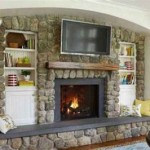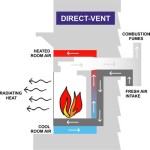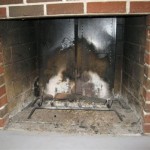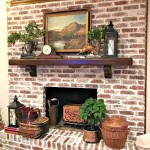Art Deco Fireplace Surrounds: A Synthesis of Style and Function
Art Deco fireplace surrounds represent a distinct and influential design movement that flourished in the interwar period, roughly from the 1920s to the 1940s. Characterized by its sleek geometric forms, rich materials, and a sense of opulent modernity, Art Deco offered a stark contrast to the more ornate and organic styles that preceded it, such as Art Nouveau. The fireplace, traditionally a focal point of the home, became a prime canvas for expressing this new aesthetic, transforming from a purely functional element into a statement of sophisticated taste and forward-looking design.
These surrounds are more than just framing devices for a fire; they are carefully considered architectural elements that contribute significantly to the overall atmosphere of a room. They often incorporate a range of materials, including polished stone, exotic woods, etched glass, and even metal accents, all meticulously chosen to complement each other and to create a visually striking composition. The design principles inherent in Art Deco, such as symmetry, stylized motifs, and a sense of verticality, are readily apparent in the construction and ornamentation of these fireplace surrounds.
The enduring appeal of Art Deco fireplace surrounds lies in their ability to imbue a space with a sense of timeless elegance and sophistication. Whether integrated into a restored historical home or incorporated into a modern interior design scheme, these surrounds possess a unique ability to elevate the aesthetic of a room and to serve as a conversation piece that reflects an appreciation for design history and craftsmanship.
The Defining Characteristics of Art Deco Fireplace Surrounds
Several key characteristics distinguish Art Deco fireplace surrounds from those of other periods. These features contribute to the overall aesthetic and help define the style's unique appeal.
Geometric Forms and Symmetry: One of the most immediately recognizable features of Art Deco is its emphasis on geometric shapes. Straight lines, sharp angles, and stepped patterns are frequently employed in the design of fireplace surrounds. Symmetry is also a crucial element, with designs often mirroring each other on either side of the firebox. This emphasis on geometry and symmetry creates a sense of order, balance, and visual harmony. The use of these forms can be seen in the overall shape of the surround, as well as in the details of the ornamentation.
Use of Luxurious and Exotic Materials: Art Deco designs are known for their use of high-quality and often exotic materials. Marble, granite, and other polished stones are commonly used for the surround itself, providing a sense of solidity and opulence. Rare woods, such as ebony, rosewood, and macassar, may be incorporated as accents or inlays, adding warmth and texture. Metal elements, such as chrome, brass, and nickel, are also frequently present, lending a touch of industrial chic to the design. The combination of these materials creates a visually rich and tactile experience.
Stylized Motifs and Ornamentation: While Art Deco embraces geometric forms, it also incorporates stylized motifs and ornamentation that reflect the spirit of the age. Common motifs include sunbursts, chevrons, zigzags, and stylized floral patterns. These motifs are often simplified and abstracted, reflecting a move away from the more literal representations of nature found in earlier styles. Ornamentation is typically restrained and integrated seamlessly into the overall design, rather than being applied as an afterthought. The careful placement and execution of these motifs contribute to the overall sense of sophistication and elegance.
The Materials Commonly Used in Art Deco Fireplace Surrounds
The choice of materials plays a crucial role in defining the aesthetic of an Art Deco fireplace surround. The materials not only contribute to the visual appeal but also influence the overall texture and feel of the piece.
Stone (Marble, Granite, Limestone): Stone, particularly marble, granite, and limestone, is a staple material in Art Deco fireplace surrounds. Marble is prized for its veining, color variations, and polished surface, offering a luxurious and sophisticated look. Granite provides a more durable and robust option, with a distinctive speckled appearance. Limestone offers a softer, more muted aesthetic with a natural, earthy feel. The use of stone adds a sense of permanence and grandeur to the fireplace surround.
Exotic Woods (Ebony, Rosewood, Macassar): Exotic woods, such as ebony, rosewood, and macassar, are often incorporated as accents or inlays in Art Deco fireplace surrounds. These woods are valued for their rich colors, distinctive grains, and luxurious feel. Ebony, with its deep black color and dense texture, provides a striking contrast against lighter materials. Rosewood, with its reddish-brown hues and swirling grain patterns, adds warmth and character. Macassar, with its contrasting dark and light stripes, offers a dramatic and visually appealing effect. The use of these exotic woods adds a touch of elegance and sophistication to the design.
Metals (Chrome, Brass, Nickel): Metal accents are commonly found in Art Deco fireplace surrounds, lending a touch of industrial chic and modernity to the design. Chrome, with its highly polished and reflective surface, is a popular choice for trim, inlays, and decorative elements. Brass, with its warm golden hue, adds a touch of richness and elegance. Nickel provides a more subtle and understated alternative to chrome, with a slightly softer and warmer tone. The use of these metals adds a sense of refinement and sophistication to the fireplace surround.
Glass (Etched Glass, Mirrored Glass): Glass, particularly etched glass and mirrored glass, is often used in Art Deco fireplace surrounds to add visual interest and create a sense of depth. Etched glass features intricate designs and patterns that are carved into the surface of the glass, adding texture and detail. Mirrored glass is used to reflect light and create the illusion of more space, adding a touch of glamour and sophistication. The use of glass adds a sense of lightness and airiness to the fireplace surround.
The Influence of Art Deco on Modern Fireplace Design
The influence of Art Deco on modern fireplace design is undeniable. While contemporary designs may incorporate modern materials and technologies, the fundamental principles of Art Deco—such as geometric forms, luxurious materials, and stylized ornamentation—continue to resonate with designers and homeowners alike.
Inspiration for Clean Lines and Geometric Shapes: Modern fireplace designs often draw inspiration from the clean lines and geometric shapes that are characteristic of Art Deco. Designers may incorporate straight lines, sharp angles, and stepped patterns into the overall form of the fireplace surround, creating a sense of order and balance. The emphasis on geometry and symmetry is a key element of Art Deco that continues to influence contemporary design.
Use of High-Quality Materials and Finishes: The Art Deco emphasis on luxurious materials and finishes continues to influence modern fireplace design. Designers often use high-quality stone, wood, and metal in the construction of fireplace surrounds, creating a sense of elegance and sophistication. The choice of materials and finishes is carefully considered to complement the overall design and to create a visually appealing and tactile experience.
Inclusion of Stylized Motifs and Ornamentation: Modern fireplace designs may incorporate stylized motifs and ornamentation that are inspired by Art Deco. Designers may use simplified and abstracted versions of sunbursts, chevrons, zigzags, and floral patterns to add visual interest and create a sense of personality. The ornamentation is typically restrained and integrated seamlessly into the overall design, reflecting the Art Deco emphasis on subtlety and refinement.
The enduring appeal of Art Deco fireplace surrounds lies in their ability to bridge the gap between historical elegance and modern sensibilities. They serve as a testament to the enduring power of good design and the ability of a well-crafted object to enhance the beauty and atmosphere of a living space. The continued incorporation of Art Deco principles into contemporary designs ensures that its influence will be felt for generations to come.

Stovax Art Deco Wood Mantel Mantels

Art Deco Fireplace Surrounds And Mantles Hand Cast Plaster Fireplaces

Art Nouveau Deco Fireplaces

Chesneys Usa The Hulanicki Art Deco By Barbara

An Art Deco Marble Fireplace Surround

Fireplacing In The Home Art Deco Living Room Fireplace Stone Designs

Art Deco Fireplace Mantel Design Ideas

Single Panel Fireplace Screen Italian Gold Art Deco Design Delamere

Art Deco Fireplace Mantel Design Ideas

Wyndham Art Deco All Tiled Fireplace Westcombes
Related Posts








